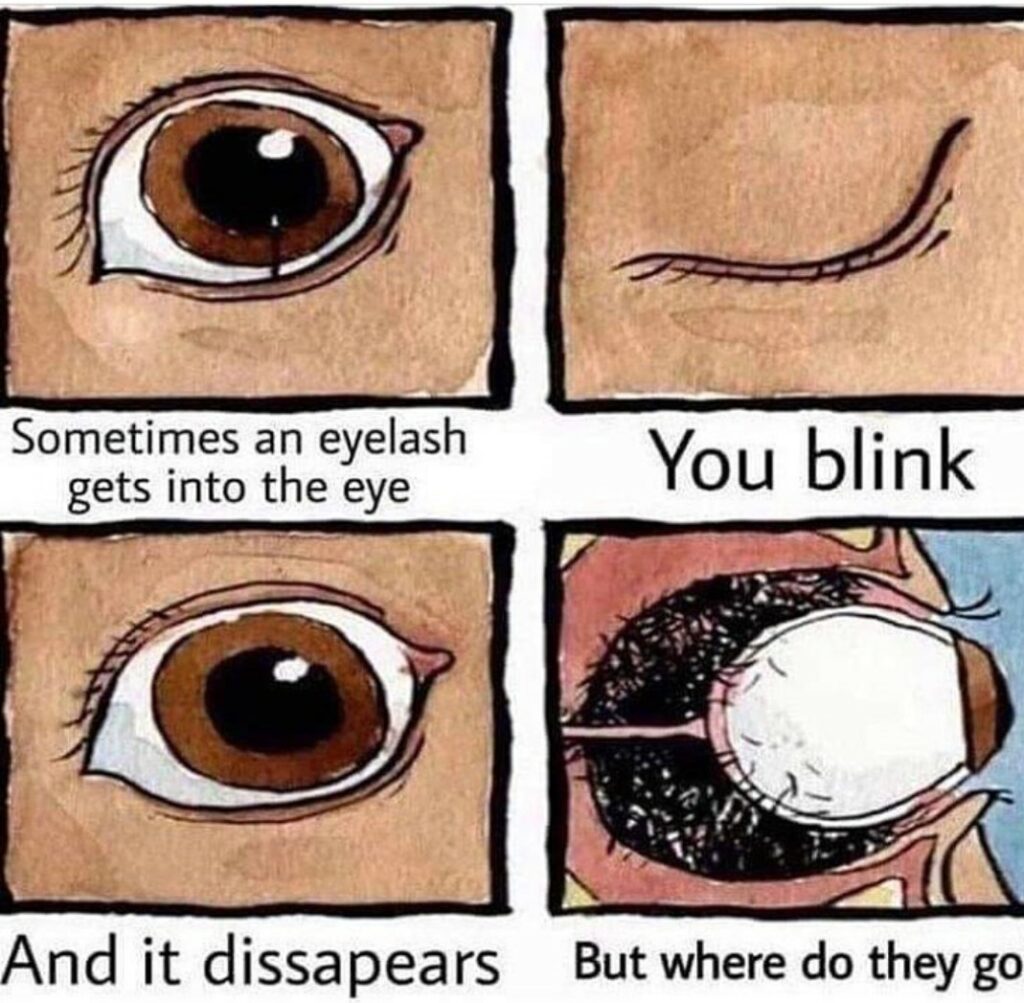
Have you ever wondered what happens to your eyelashes when you blink? It seems like they disappear for a moment, only to reappear as quickly as they vanished. This seemingly simple action is actually quite fascinating, involving a complex interplay of muscles and reflexes designed to protect one of our most vital senses: sight. In this article, we’ll delve into the mechanics of blinking and explore how eyelashes play a crucial role in safeguarding your eyes.
This article will examine the function of eyelashes during a blink, the underlying reflex that triggers this action, and the specific ways eyelashes contribute to protecting your cornea. We’ll also discuss the fascinating movement involved in blinking and how it ensures optimal eye protection.
How Eyelashes Function During a Blink
Eyelashes are more than just aesthetic features; they serve a vital purpose in protecting our eyes from foreign particles and debris. When you blink, your eyelashes act as a barrier, sweeping away dust, dirt, and other irritants that may come into contact with your eye surface. This protective function is essential for maintaining clear vision and preventing eye infections.
Eyelashes are also sensitive to touch and light. Specialized nerve endings within the eyelash follicles transmit signals to the brain when something brushes against them or when there’s a change in light intensity. This sensory input helps us become aware of our surroundings and react accordingly, such as closing our eyes to avoid bright light or potential harm.
Blink Reflex and Eye Protection
The blink reflex is an involuntary, rapid contraction of muscles that controls the eyelids. It’s triggered by various stimuli, including touch, light, wind, and even emotional responses like surprise or fear. This reflex ensures that your eyes are constantly being protected from potential threats.
The blink reflex involves a complex neural pathway that connects the sensory receptors in the eye to the motor neurons controlling the eyelid muscles. When a stimulus is detected, a signal travels along this pathway, causing the eyelids to close quickly and efficiently. The average person blinks around 15-20 times per minute, demonstrating the constant vigilance of this protective mechanism.
Eyelash Movement During Blinking
When you blink, your eyelashes don’t simply disappear; they move in a coordinated fashion to effectively sweep away debris and protect your eye surface. As your eyelids close, your eyelashes are drawn upwards and outwards, temporarily resting against the eyelid’s surface. This upward movement helps to create a barrier that prevents foreign particles from entering your eye.
The precise movement of your eyelashes during blinking is influenced by several factors, including the speed and force of the blink reflex, the shape and length of your eyelashes, and even individual variations in muscle control. This intricate choreography ensures that your eyelashes effectively perform their protective role.
Cornea Protection
The cornea, the transparent outer layer of your eye, is particularly vulnerable to damage from foreign objects and irritants. Eyelashes act as a first line of defense, intercepting these threats before they can reach the delicate corneal surface.
When you blink, your eyelashes create a gentle sweeping motion that helps to remove dust, pollen, and other particles that may have settled on your eye. This constant cleansing action helps to maintain the clarity and health of your cornea, ensuring optimal vision.
Conclusion
The seemingly simple act of blinking is actually a complex and fascinating process involving intricate muscle movements and reflexes designed to protect our eyes. Eyelashes play a crucial role in this protective mechanism, acting as a barrier against foreign particles and debris. Understanding how eyelashes function during a blink allows us to appreciate the remarkable complexity and efficiency of our body’s natural defenses.
